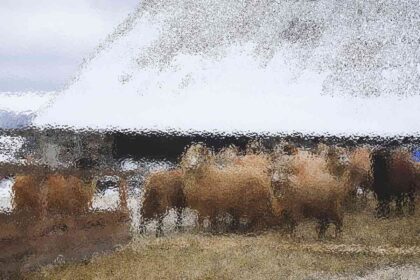A Story That Started With Curiosity
On a quiet afternoon in an old university laboratory, Dr. Eleanor Marsh placed a single cell under her microscope. What she saw wasn’t extraordinary not at first. But over time, that cell’s descendants began to change, subtly yet persistently. Some developed new traits; others adapted to different nutrients. When she realized that two distinct lineages could no longer reproduce with each other, she smiled knowingly. “This,” she whispered, “is speciering.” That moment of scientific discovery a blend of patience, curiosity, and wonder is where our story of speciering begins. Though it may sound like a technical term, the concept holds deep significance not only in biology but also in understanding how life diversifies and adapts through time.
What Is Speciering? A Simple Explanation
In the most basic sense, speciering refers to the gradual process by which new species emerge from existing ones. Over generations, populations of the same species may become isolated by geography, behavior, or environment and evolve distinct traits. Eventually, these differences grow so great that interbreeding is no longer possible. This process is nature’s way of reinventing itself. It’s how diversity blossoms across ecosystems and how unique life forms fill every niche on Earth from microbes in boiling vents to mammals in icy tundras.
The Science Behind Species Formation
Genetic Variation and Natural Selection
At the core of speciation lies genetic variation the subtle differences that exist among individuals in a population. Mutations, gene flow, and recombination create diversity, while natural selection acts as a sculptor, preserving traits that offer advantages in survival or reproduction. Over thousands or millions of years, these tiny changes accumulate, eventually leading to reproductive isolation the key marker of new species.
Geographical Isolation: When Distance Divides
Often, speciering begins when populations are separated by physical barriers like mountains, rivers, or oceans. Each isolated group faces unique challenges and environments, prompting different adaptations. This is called allopatric speciation, the most common form of species formation. For example, consider finches on the Galápagos Islands each island’s environment shaped its birds’ beaks differently, creating multiple distinct species from a single ancestral group.
Types of Speciation in Nature
Sympatric Speciation
In this type, new species arise within the same geographical area. This happens when behavioral or ecological preferences divide a population. For instance, certain insects may begin feeding on different plants, leading to genetic isolation even while living side by side.
Parapatric Speciation
Here, populations are separated not by impassable barriers but by partial ones perhaps a long stretch of differing habitats. The edges of these ranges meet, but limited gene flow allows evolutionary differences to take hold.
Peripatric Speciation
This occurs when a small group breaks away from a larger population, often colonizing new territories. Due to their small size, genetic drift and selection can act more rapidly, leading to faster divergence.
Speciering and the Modern World
It’s fascinating to realize that speciering isn’t confined to the past. Even today, nature continues this quiet process of creation. Scientists have documented rapid speciation events in plants, insects, and even certain birds sometimes occurring within just a few generations. Urban environments also play an unexpected role. Cities create micro-habitats with unique pressures pollution, temperature variations, artificial light that can drive populations to evolve separately from their rural counterparts.
In essence, the Earth remains a living laboratory of evolution, constantly rewriting its own genetic story.
Why Speciering Matters to Humanity
Biodiversity and Ecosystem Stability
Each new species adds resilience to the planet’s web of life. A diverse ecosystem can adapt better to changes, resist diseases, and recover from natural disasters. Speciering, therefore, is not just about biology it’s about sustainability and balance.
Medical and Technological Discoveries
Understanding how species evolve helps researchers unlock new medical and technological innovations. For example, studying the genetic divergence between species can reveal how certain organisms resist disease, paving the way for human therapies.
A Deeper Connection to Nature
Finally, there’s a philosophical dimension. Recognizing the ongoing dance of speciering reminds us that humanity, too, is part of this evolutionary continuum. We are not outside of nature we are one of its outcomes, ever-changing and adapting.
Challenges in Studying Speciering
Despite centuries of study, many mysteries remain. Determining the exact moment one species becomes another is tricky, as evolution doesn’t happen in neat steps. Fossil records, DNA sequencing, and field observations often give incomplete pictures. Moreover, human activity habitat destruction, climate change, and pollution threatens to disrupt these natural processes, sometimes halting potential new species before they can fully emerge.
The Future of Life’s Diversity
As scientists continue to explore genetics and evolutionary biology, new tools like CRISPR and genome mapping are providing unprecedented insights into how species form. These technologies could even allow humans to witness or one day influence the course of evolution itself. However, this power comes with responsibility. Preserving the delicate balance that allows speciering to flourish is essential if we hope to maintain Earth’s incredible biodiversity.
Conclusion: The Endless Cycle of Renewal
From a single cell to the vast tapestry of life, speciering symbolizes nature’s boundless creativity. It’s a quiet yet powerful reminder that change is the only constant, and that life, in all its forms, never stops evolving. As Dr. Marsh once said, “Each new species is a whisper of time a story written in DNA.”
The more we understand that story, the more deeply we can appreciate our shared origin and our shared future in the ever-evolving book of life.








